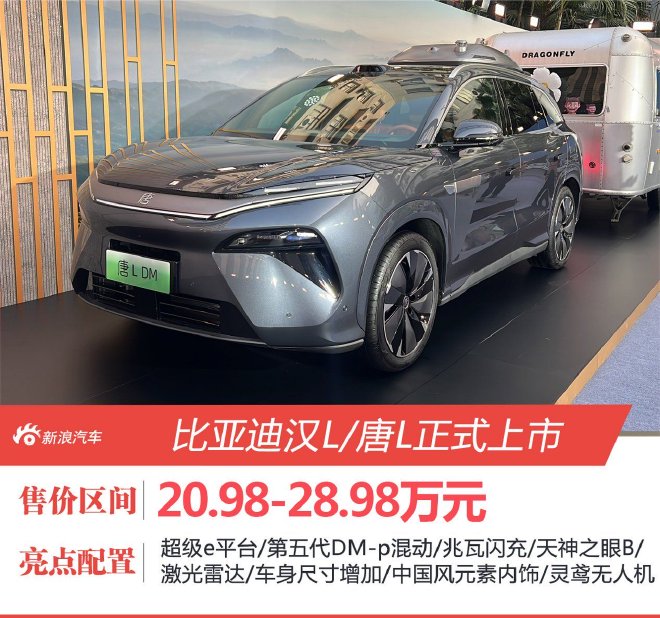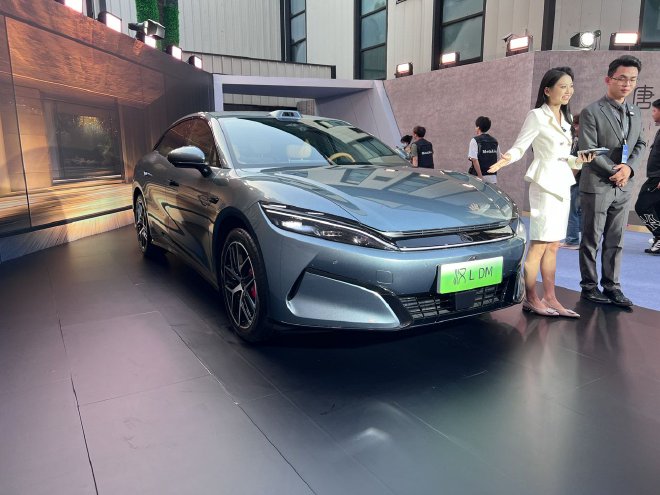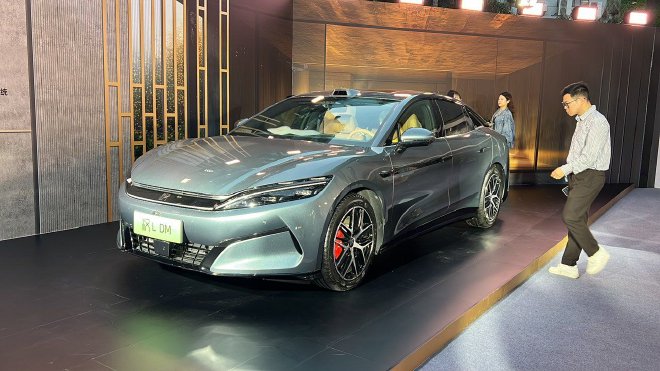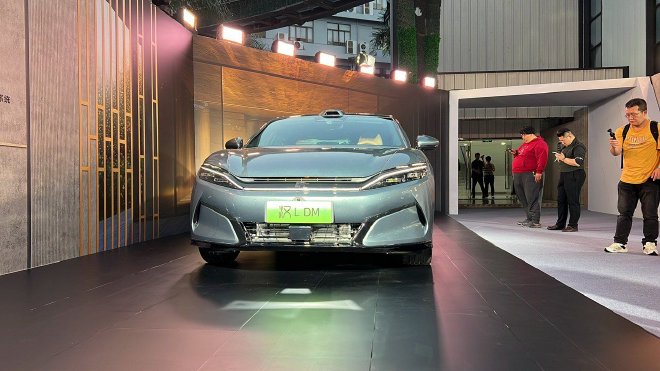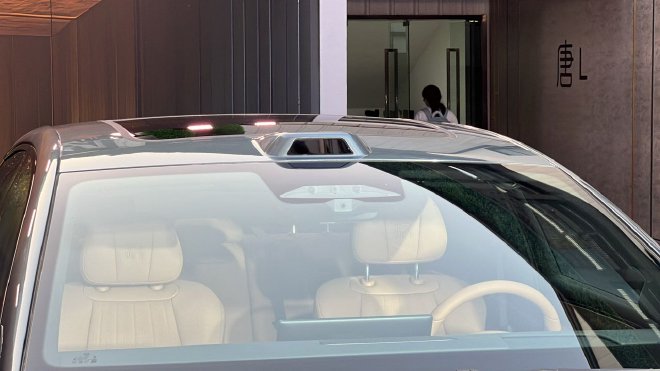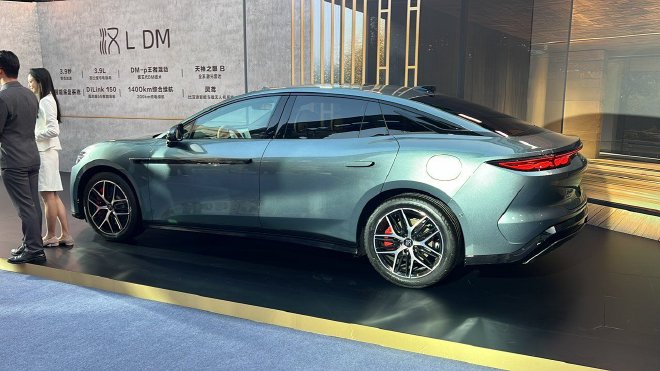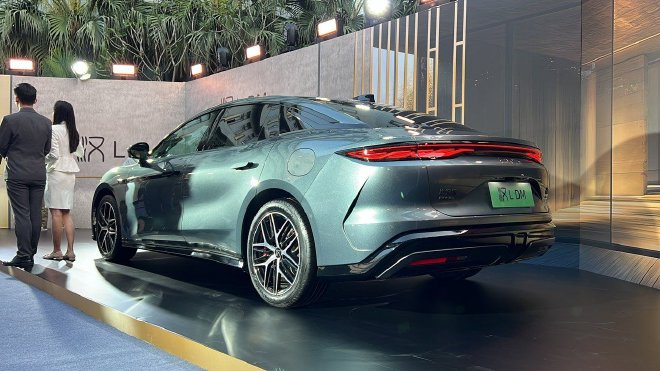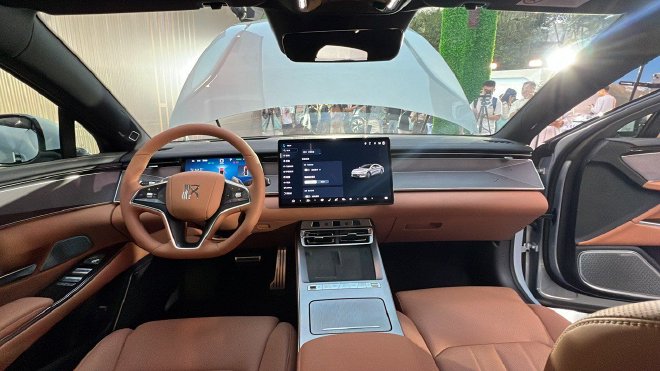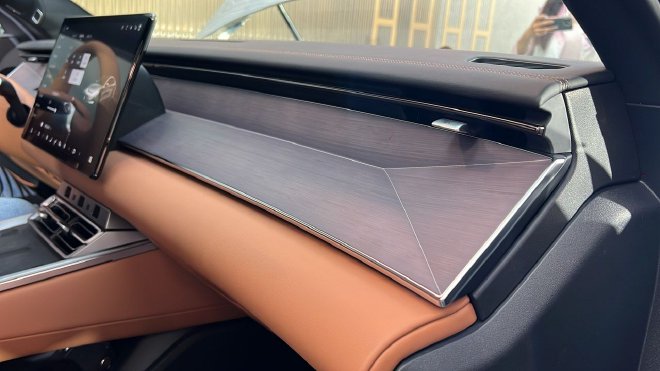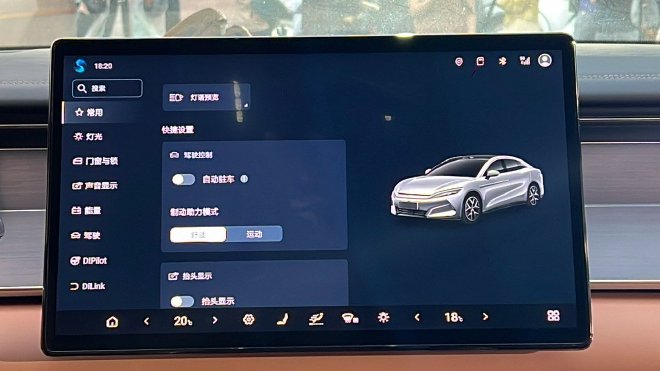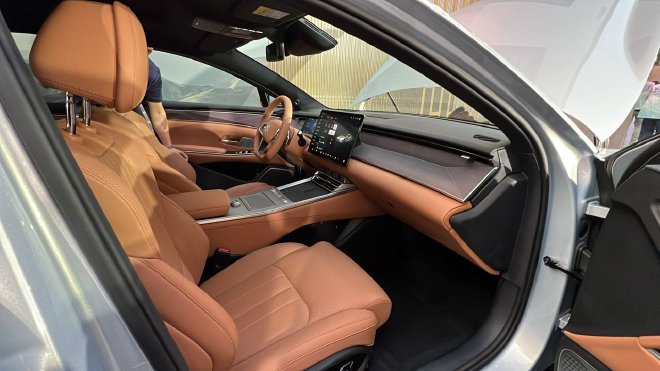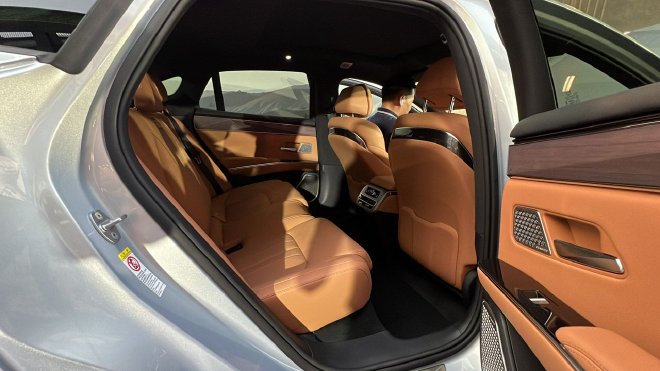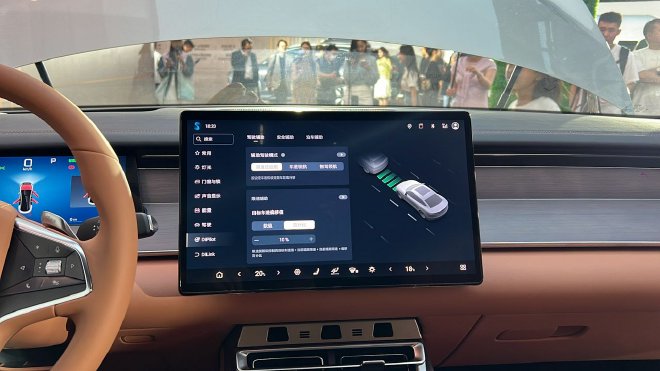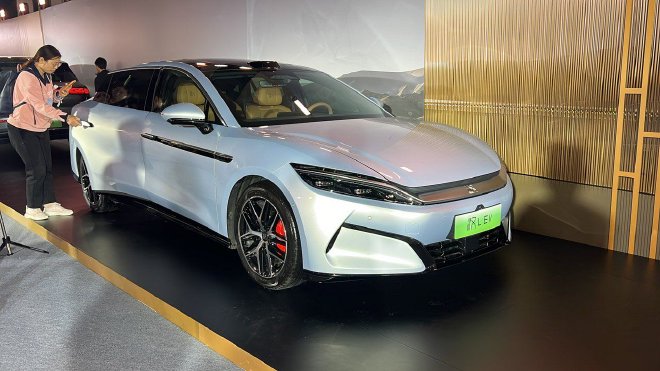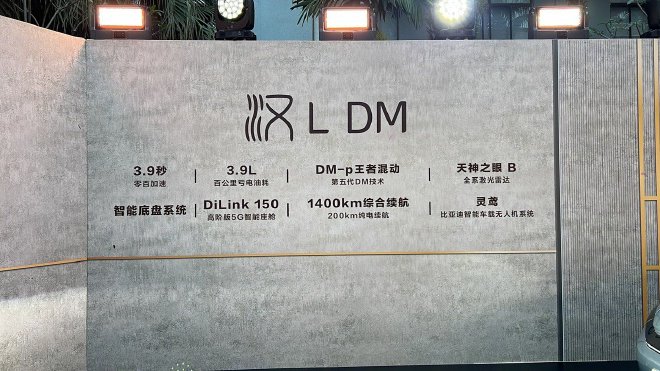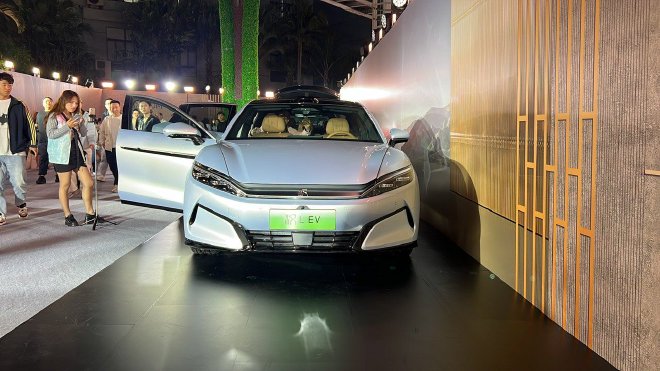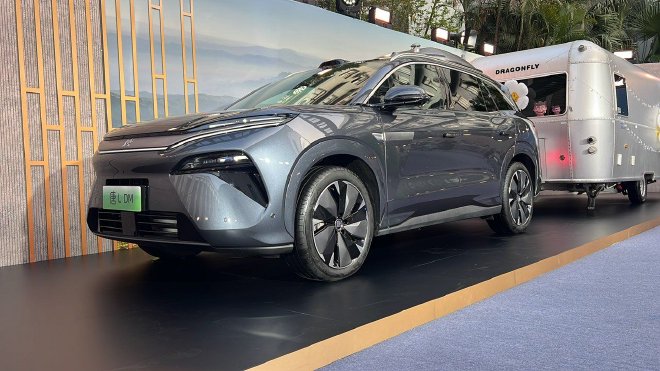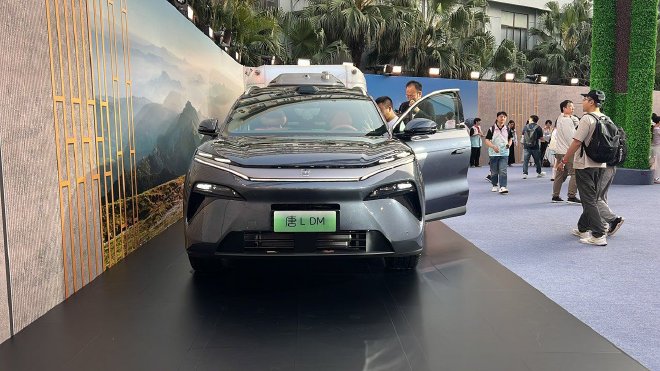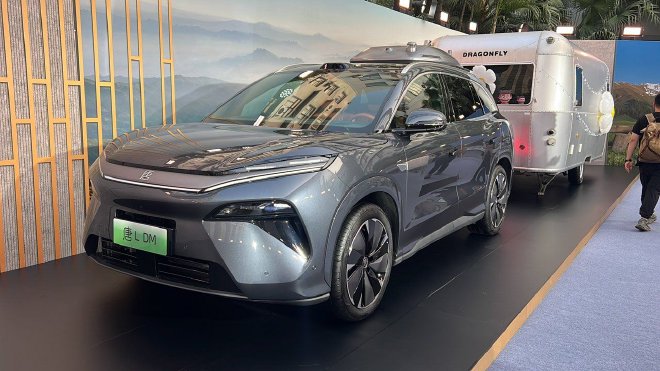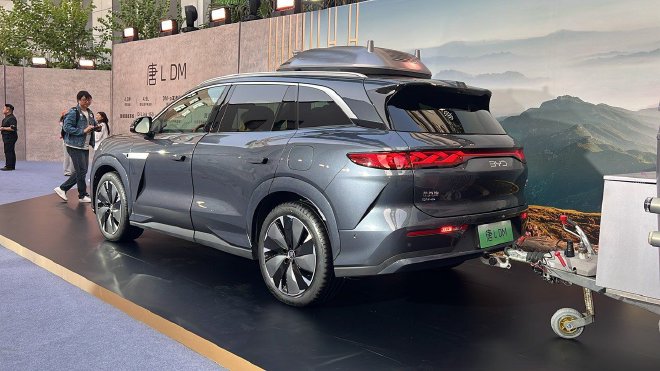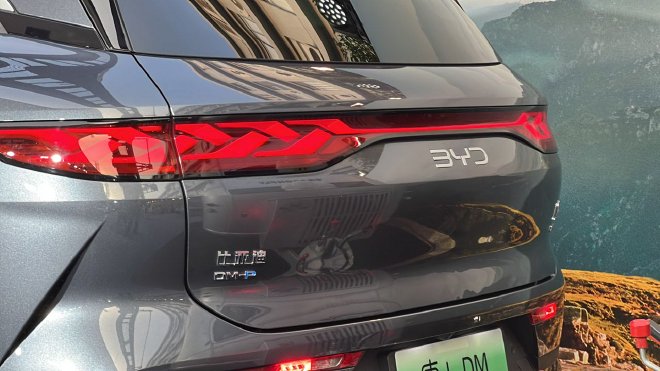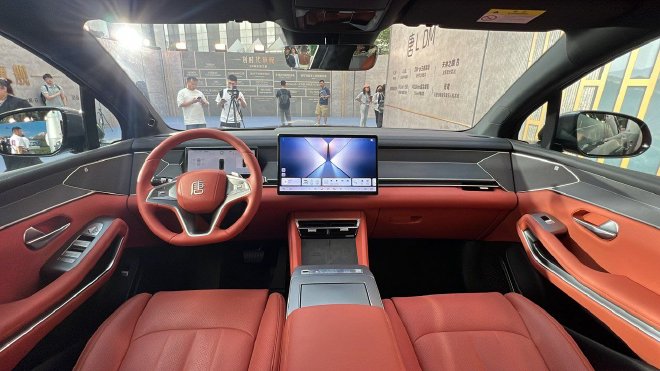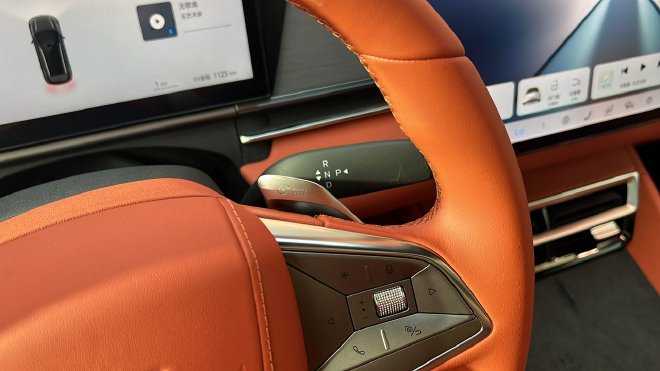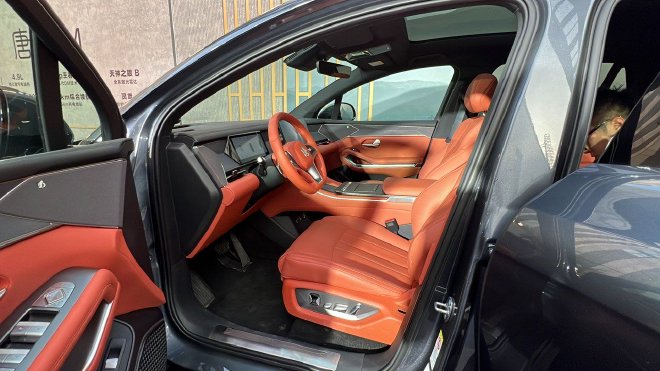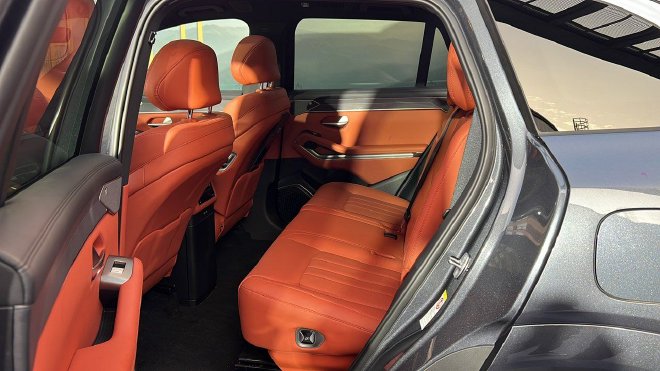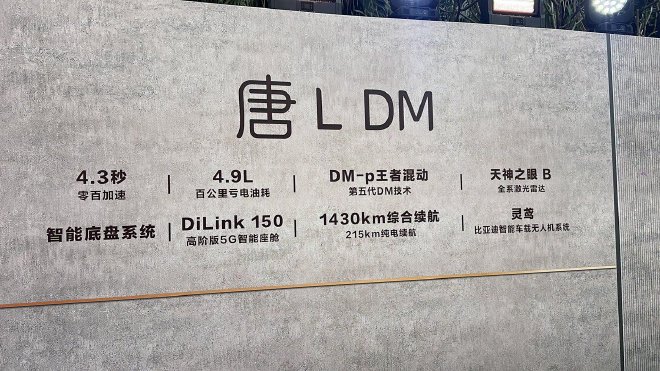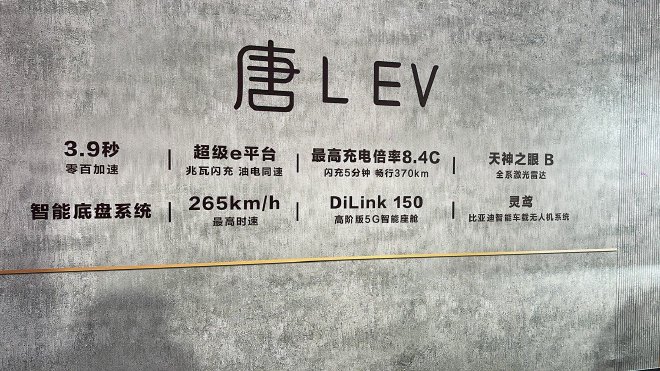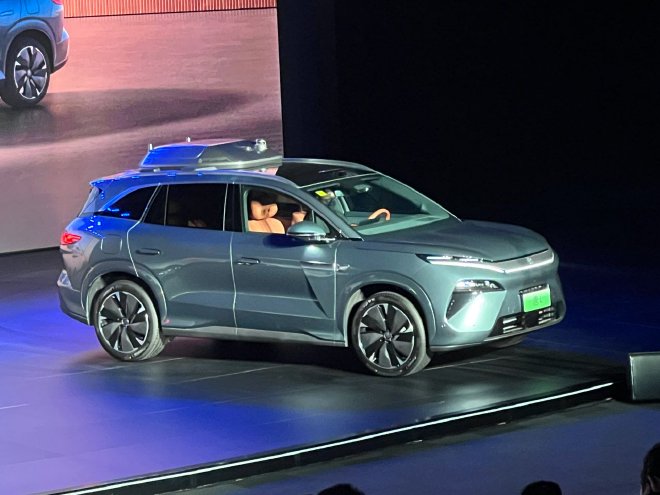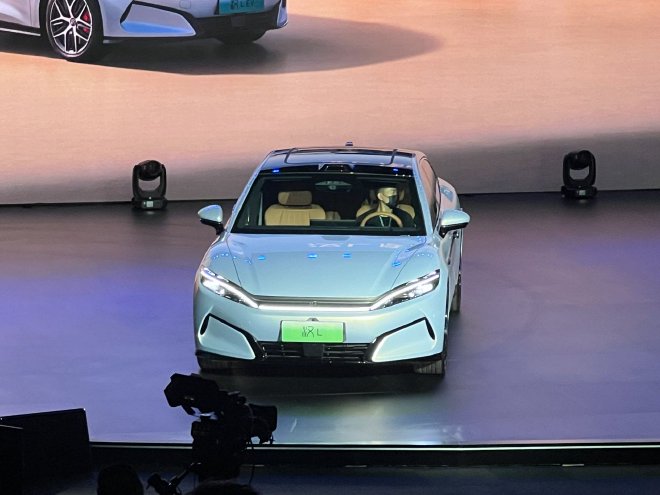On April 9, BYD launched two key models, the Han L and Tang L. The Han L offers six variants, priced between 219,800 and 279,800 yuan (38370$) for the EV and 209,800 to 259,800 yuan (35630$) for the DM. The Tang L also has six variants, with prices ranging from 239,800 to 289,800 yuan (39740$) for the EV and 229,800 to 285,800 yuan (39190$) for the DM. Both models feature various technologies from BYD, including the Super e-platform, fifth-generation DM-p hybrid, megawatt flash charging, and the God Eye B technology.
The Han L positions itself as a mid to large sedan. Its design impresses with a strong visual impact, surpassing the simple elongated “L” version. The Han L is not just an extension of the Han. It is a completely new model. It differs significantly in appearance, interior, platform, and electric systems.
The Han L features a completely revamped design. It showcases new headlights at the front. The car adopts BYD’s latest “loong face” design language. The daytime running lights integrate a dragon whisker style. This combination enhances its recognition. The front bumper introduces an active grille design. This improves aerodynamics and gives the front a sportier look.
The Han L measures 5050mm in length, 1960mm in width, and has a wheelbase of 2970mm. Compared to the current Han, it increases in length by 55mm, width by 50mm, height by 10mm, and wheelbase by 50mm. This establishes its flagship sedan position. It offers a stronger presence and a more spacious riding experience.
The roof features a “watchtower-style” lidar. It supports the advanced “Sky Eye B” intelligent driving system. The side of the car showcases the Han L’s most attractive aspect. The fastback shape blends with the hatchback design. This creates a sporty yet executive coupe style.
The side of the car shows attention to detail. A trim piece extends from the front fender to the door handle. It blends with the hidden door handle. This design enhances the car’s refinement and technology feel. It also boosts the overall recognition of the vehicle.
The rear design is simple and elegant. The bamboo joint-shaped taillights stand out when lit. The black lacquered trim and symmetrical diffusion structure enhance the visual impact.
The interior design of the Han L received a complete overhaul. It incorporates strong Chinese cultural elements. You can see bamboo and wood textures in the details. The design mimics the structure of ancient Chinese architecture. The overall atmosphere is elegant and rich in cultural heritage. It continues BYD’s commitment to Chinese aesthetic elements.
The central control area features a 15.6-inch floating touchscreen. It has a high resolution and responds quickly to touch. Daily operations are convenient and smooth. The 12.3-inch full LCD instrument panel works with the HUD head-up display. Together, they provide drivers with rich driving information and a strong tech atmosphere. The addition of the electronic gear shifter enhances the cabin’s futuristic feel. The technology level shows a clear improvement over the current model.
The Han L may not excel in luxurious interior design, but it offers plenty of features. It includes a car refrigerator with an independent compressor, a Dynaudio sound system, and seats covered in extensive genuine leather. These elements enhance practicality and elevate the car’s premium feel. You immediately sense its flagship status upon entering.
In smart driving, the Han L features the advanced “Heavenly Eye B” system. Its hardware specifications significantly improve over the “Heavenly Eye C.” It includes lidar and supports various smart driving functions, such as high-speed and urban navigation and valet parking. Its overall capabilities approach the top level of new forces. The smart driving experience is promising.
The cabin offers comfort. All four seats in the front and rear support electric adjustment, heating, ventilation, and massage functions. The rear center armrest features a built-in LCD control screen, enhancing the experience for backseat passengers. The four doors use double-layer soundproof glass. The panoramic sunroof and electric sunshade effectively block outside noise and sunlight. For the power system, the Han L provides both plug-in hybrid and pure electric drivetrains. Buyers can choose between two-wheel drive and four-wheel drive versions to meet varying performance needs.
The Han L DM features fifth-generation DM technology. It has a 1.5T engine that delivers a maximum power of 115 kW. The motor power reaches 200 kW, balancing energy efficiency and performance. The more powerful Han L DM-p uses a dual motor layout, with both motors at 200 kW. Its combined power is impressive, achieving 0 to 100 km/h in just 3.9 seconds. The battery capacity is 29.462 kWh. The WLTC electric range is 170 km and 145 km. The fuel consumption in low battery mode is only 5 L/100 km, offering advantages in both range and efficiency.
The Han L EV offers a pure electric version. The single motor model delivers a maximum power of 500 kW. The all-wheel-drive version features a dual motor setup with 230 kW and 580 kW, totaling 810 kW. It accelerates from 0 to 100 km/h in 2.7 seconds, rivaling supercars. The vehicle includes an 83.212 kWh large-capacity battery. The CLTC pure electric range reaches 701 km for the single motor and 601 km for the dual motor. It supports the new Super E platform and “Megawatt Flash Charge” technology, greatly enhancing charging efficiency.
The chassis features a front double wishbone and a rear five-link independent suspension. This setup ensures driving enjoyment while maintaining comfort.
The Tang L is a new creation from the Tang family. It targets the C-class large SUV market. The design, size, intelligence, and power have all received upgrades. The Tang L features BYD’s new “Dragon Face” design, which looks more futuristic and powerful than the previous model. The front includes split headlights, and an LED light strip outlines a distinctive “dragon whisker” shape. The upper dual light strip also functions as turn signals, adding visual depth. Large wheels and a robust body line complement each other, creating a strong overall presence.
The vehicle’s dimensions increase. It measures 5040mm in length and has a wheelbase of 2950mm. This design creates a more spacious cabin. The side profile features smooth lines. Hidden door handles and decorative strips on the front fenders blend into the visual design. This design minimizes the visibility of sensors while balancing technology and aesthetics. The roof houses a lidar system, supporting the advanced “Sky Eye B” intelligent driving system.
The rear design is smooth and full. The taillights feature an upgraded “Chinese knot” design. This design draws inspiration from the elegant “bamboo rhythm.” It resembles a woven bamboo basket, both exquisite and unique. The tailgate displays the DM-p system, 4.3-second acceleration, and the Tian Shen Zhi Yan B intelligent driving system. These elements highlight its status as a performance flagship.
The interior follows the design style of the Han L. It uses natural bamboo wood panels extensively. 3D carving and 15 polishing processes highlight Eastern craftsmanship. The car features a 15.6-inch central control screen, a full LCD instrument panel, and a multifunction steering wheel. It blends technology and quality.
The Tang L excels in space as a mid-to-large SUV. Both front and rear seats support electric adjustment. The rear seats fold flat, easily accommodating large luggage. The third row offers easy access and a reasonable seat height. It suits large families and long trips well. Its practicality is top-notch.
Tang L offers two power systems: plug-in hybrid and pure electric. The plug-in hybrid version uses fifth-generation DM technology. The DM-i model features a 115 kW 1.5T engine paired with a 200 kW motor. The DM-p model includes a dual-motor four-wheel drive system. It delivers a total power of 400 kW, balancing performance and efficiency. The battery capacity is 35.624 kWh. The pure electric range varies by model, offering options of 135 km, 150 km, and 165 km.
The pure electric Tang L offers rear-wheel drive and all-wheel drive versions. The rear-wheel drive model features a 500kW permanent magnet synchronous motor. The all-wheel drive version combines a 230kW AC asynchronous motor with a 580kW permanent magnet motor. The system delivers strong performance. All models use a 100.531kWh second-generation blade battery. The CLTC range reaches 670km for the rear-wheel drive and 600km for the all-wheel drive. They support megawatt-level fast charging technology, significantly improving charging efficiency.
In summary, the Han L and Tang L feature many core technologies from BYD. These two models surpass their class. They utilize cutting-edge technologies like the Super e-platform and megawatt fast charging. They achieve significant advancements in power performance, intelligent chassis, and energy replenishment efficiency. They demonstrate the technical strength of flagship new energy vehicles. They can recharge 400 km in 5 minutes, accelerate from 0 to 100 km/h in 2 seconds, and reach over 300 km/h. With the support of the DiDyna intelligent chassis and cloud vehicle system, they create a highly competitive product lineup.
The price range under 290,000 yuan (39770$) guarantees fierce competition. It serves as a high ground for technological breakthroughs and a test of market acceptance. In this battle of strong contenders, we should watch if Han L and Tang L can stand out with their solid capabilities.
